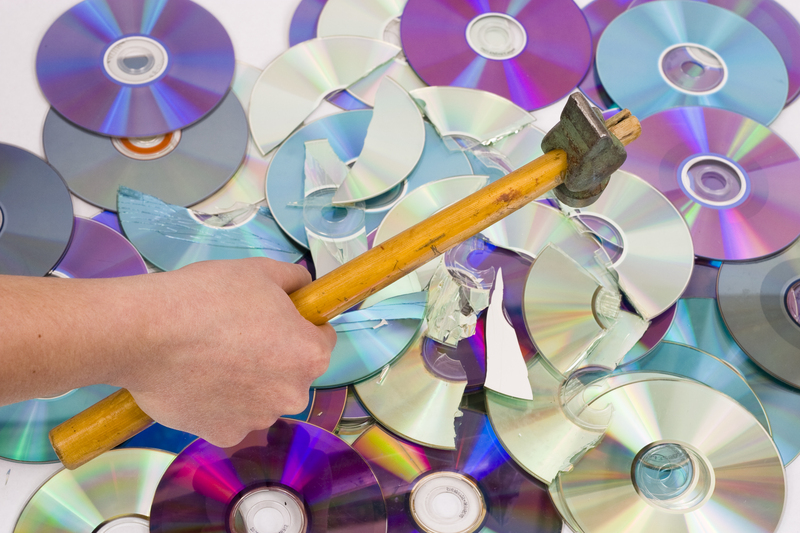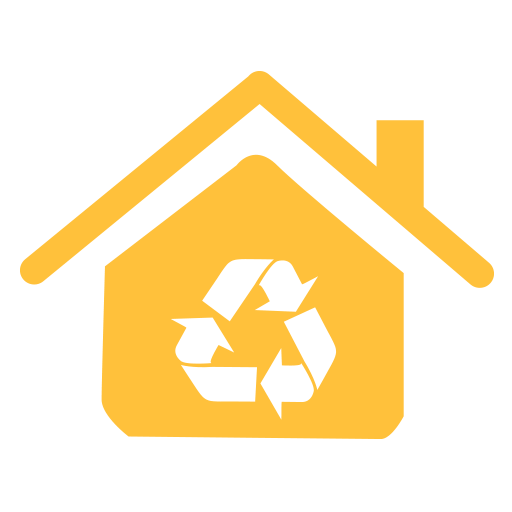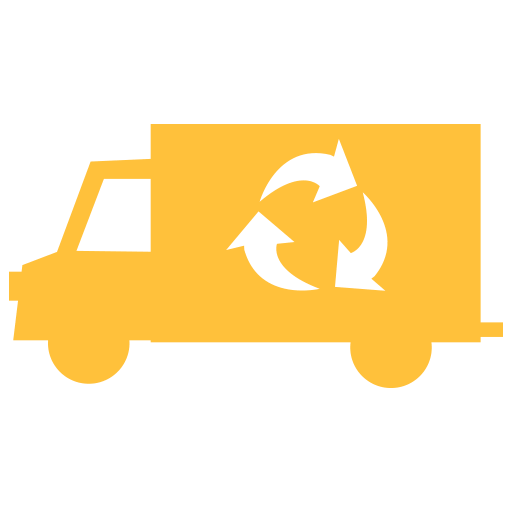Navigating the World of Plastics: Which Ones to Escape
Posted on 01/07/2025
Navigating the World of Plastics: Which Ones to Escape
In today's world, plastics are everywhere. From packaging to household goods, clothing to electronics, these versatile materials have transformed modern life. But as scientific evidence mounts about their adverse effects on human health and the environment, a critical question arises: which plastics should we avoid? Whether you're environmentally conscious or health-minded, it's vital to understand the different types of plastics, their pluses and pitfalls, and discover practical steps to minimize your risk.

Understanding the Plastics Code System
Most plastic products feature a small symbol: a triangle made of arrows enclosing a number, commonly referred to as a "resin identification code." These codes (ranging from 1 through 7) tell you what type of plastic was used. But interpreting this plastic code and knowing which plastics to avoid can be confusing!
- Code 1: PET or PETE (Polyethylene Terephthalate)
- Code 2: HDPE (High-Density Polyethylene)
- Code 3: PVC (Polyvinyl Chloride)
- Code 4: LDPE (Low-Density Polyethylene)
- Code 5: PP (Polypropylene)
- Code 6: PS (Polystyrene)
- Code 7: Other (includes Polycarbonate, BPA, and other plastics)
Let's delve into what each code means for your health and our planet.
Plastic #1: PET or PETE (Polyethylene Terephthalate)
Common Uses:
- Soda and water bottles
- Food jars (like peanut butter)
- Microwavable containers
Health and Environmental Impact:
While PET is considered generally safe for single use, problems arise with repeated use. Over time, PET plastic can leach harmful chemicals, especially when exposed to heat or physical wear. Studies suggest antimony, a heavy metal catalyst used in PET production, can leach into liquids, particularly when bottles are left in hot environments.
- Environmental hazards: PET is recyclable but often ends up in landfills or the ocean, where it does not biodegrade.
Should You Escape PET?
- Best to avoid reusing PET containers, especially for food and drinks.
- Always keep PET bottles out of heat and sunlight.
Plastic #2: HDPE (High-Density Polyethylene)
Common Uses:
- Milk jugs
- Detergent bottles
- Juice containers
- Toys
Health and Environmental Impact:
HDPE is considered one of the safest plastics for food and beverage storage. It's resistant to chemicals and doesn't leach easily, even when subjected to sunlight or heat. HDPE is easily recyclable and widely accepted at recycling centers.
Should You Escape HDPE?
- Relatively safe for use, but reduce reliance to lower overall plastic consumption.
- Recycle HDPE products whenever possible.
Plastic #3: PVC (Polyvinyl Chloride)
Common Uses:
- Plumbing pipes
- Shower curtains
- Children's toys
- Food wrap
Health and Environmental Impact:
PVC is one of the most hazardous plastics. Manufacturing and incinerating PVC releases dioxins, a class of highly toxic compounds. Many PVC products are made flexible by adding phthalates - chemicals that interfere with hormones and are linked to reproductive issues, asthma, and developmental complications.
- Not easily recycled-- few curbside recycling programs accept PVC.
- Known carcinogen (vinyl chloride) used in its manufacture.
Should You Escape PVC?
- Yes, avoid PVC wherever possible.
- Never burn PVC products.
- Avoid using plastic wrap or any food-contact items made from PVC.
Plastic #4: LDPE (Low-Density Polyethylene)
Common Uses:
- Plastic shopping bags
- Bread bags
- Squeezable bottles
- Some food wraps
Health and Environmental Impact:
LDPE doesn't leach many chemicals and is generally considered safe for food use, though not as robust as HDPE. However, LDPE is most often used in single-use items like bags that clog landfills and pollute oceans. Its light weight means it's easily carried by wind and water, harming wildlife and marine ecosystems.
Should You Escape LDPE?
- Minimize single-use LDPE items whenever possible.
- Opt for reusable alternatives - cloth bags over plastic, for example.
- LDPE is sometimes recyclable - check with your local service.
Plastic #5: PP (Polypropylene)
Common Uses:
- Yogurt cups
- Straws
- Takeaway food containers
- Medicine bottles
- Microwave-safe containers
Health and Environmental Impact:
PP is regarded as one of the safest plastics for food and beverage applications. It has a high melting point, making it suitable for products exposed to heat (like microwave containers). It's also less likely to leach chemicals. However, PP's major drawback is poor recycling rates, meaning it often ends up as waste.
Should You Escape PP?
- Generally safe for food use, but seek out products using truly reusable, non-plastic alternatives when possible.
- Recycle PP when your local program accepts it.
Plastic #6: PS (Polystyrene - also known as Styrofoam)
Common Uses:
- Disposable coffee cups
- Take-out containers
- Packing peanuts
- Plastic cutlery
Health and Environmental Impact:
Polystyrene is lightweight and cheap, but it has significant health and environmental risks. It can release styrene - a probable human carcinogen - especially when heated or when in contact with fatty foods. Polystyrene is notoriously difficult to recycle and prone to fragmenting into microplastics that pollute water and food chains.
Should You Escape PS?
- Avoid polystyrene products whenever possible.
- Choose reusable dinnerware and containers.
Plastic #7: Other (Including Polycarbonate, BPA, Miscellaneous Plastics)
Common Uses:
- Sports water bottles
- Baby bottles
- Some food storage containers
- Electronics and automotive parts
Health and Environmental Impact:
Plastic #7 is a catch-all for various plastics, most notably polycarbonate. Many #7 plastics contain BPA (Bisphenol A), a compound linked with hormonal disruptions, cancer, and fertility issues. Though many brands now label products as "BPA-free," alternatives sometimes use similar chemicals (like BPS) with unknown or similar risks.
- Usually not accepted in residential recycling programs.
Should You Escape Plastic #7?
- Avoid #7 plastics for all food and drink purposes.
- Prefer glass, stainless steel, or certified BPA/BPS-free products from reputable sources.
Microplastics: The Invisible Threat
While we often focus on which plastics to avoid based on their codes, an increasingly urgent issue is microplastics. These tiny particles (less than 5mm) originate from the breakdown of larger plastic debris, synthetic fibers, and personal care products. Recent studies have found microplastics in bottled water, seafood, salt, and even the air.
- Microplastics are nearly impossible to escape.
- Potential health effects include inflammation, hormone disruption, and increased risk of disease.
Understanding the sources and pathways of microplastics can help you make smarter choices about the plastics you use and how you dispose of them.
What Makes Some Plastics More Dangerous Than Others?
Leaching Chemicals and Additives
The greatest concern around plastics centers on chemical leaching. Some plastics, notably PVC (#3), Polystyrene (#6), and many #7 plastics, contain dangerous additives or are made from monomers known to disrupt hormones or cause cancer. Heat, sunlight, physical stress, or fatty foods can increase the rates at which these chemicals migrate into food and drinks.
Key chemicals of concern:
- BPA and BPS: Found in polycarbonate plastics. Linked to endocrine disruption, reproductive issues, metabolic disease.
- Phthalates: Common plasticizers found in PVC. Associated with asthma, birth defects, hormone-related cancers.
- Styrene and Benzene: Released from polystyrene. Probable human carcinogens, affect nervous system.
- Antimony: Heavy metal used in PET production. Linked to vomiting and chronic exposure risks.
How to Reduce Your Exposure: Practical Tips
- Prioritize reusables: Switch to glass, stainless steel, or silicone containers for food and drinks.
- Skip single-use plastics: Bring your own bags, use bamboo or metal straws, and avoid disposable cutlery/cups.
- Avoid heating food in plastic: Even "microwave-safe" plastics can release additives under prolonged heat. Use glass or ceramic.
- Check codes before purchase: Favor codes #2 (HDPE), #4 (LDPE), and #5 (PP) for safer options, but minimize all plastics where possible.
- Purchase BPA-free products with caution: New chemicals may pose similar risks--read up on alternatives.
- Support bans and policies: Vote for or advocate local and global bans on problematic plastics like PVC, Polystyrene, and single-use bags.
- Encourage recycling and responsible disposal: Rinse recyclables, avoid contaminating recycling bins, and research your local regulations.
Spotting Greenwashing: Are 'Eco-Friendly' Plastics Safer?
Beware of "compostable" or "biodegradable" plastics, often marketed as eco-friendly. While they may degrade faster in certain conditions, many require industrial composting unavailable to most consumers. Some "plant-based" plastics are still chemically identical to conventional plastics and pose similar risks.
- Read labels carefully.
- Look for certified compostable products and understand how to dispose of them properly.

Frequently Asked Questions About Plastics You Should Escape
Which plastic numbers should I avoid for food storage?
Steer clear of #3 (PVC), #6 (Polystyrene), and #7 (Other, including BPA-containing plastics) for any contact with food or drinks.
Is it safe to reuse bottled water bottles?
Plastic #1 (PET) bottles are single-use and not safe for repeated use due to bacterial buildup and leaching risks.
Which plastics are safest for the environment?
While no plastic is truly "safe" for the environment, HDPE (#2) and PP (#5) are less toxic, more easily recycled, and do less long-term damage. Nonetheless, always use less plastic if possible.
Are BPA-Free plastics really better?
BPA-Free isn't a guarantee of safety. Alternative additives like BPS may be used instead, and the long-term effects are not fully understood. Rather than relying on new plastics, swap to glass, metal, or other truly inert materials.
Conclusion: Making Smart Choices in a Plastic World
You don't have to be an expert to navigate the world of plastics wisely. By learning which plastics to escape--especially PVC (#3), Polystyrene (#6), and #7 (Other, including polycarbonate and BPA-containing items)--you can better protect your health and contribute to a safer planet. Remember, no plastic is entirely risk-free, but informed choices and small changes can add up to a significant impact.
Take charge of your plastic consumption: Choose safe alternatives, challenge single-use culture, and spread awareness about the risks of problematic plastics. As science continues to reveal more about the hazards of plastic, every small step helps safeguard your health and that of our environment.

 020 3859 5574
020 3859 5574 020 3859 5574
020 3859 5574




 House clearance
House clearance Rubbish collection
Rubbish collection Do you have a waste build-up in your home that you need taken care of or cleared out? We provide top quality home clearance services in the...
Do you have a waste build-up in your home that you need taken care of or cleared out? We provide top quality home clearance services in the... At Junk Removals Services we believe strongly in providing all of our customers with good quality rubbish collection services in London. We understand the...
At Junk Removals Services we believe strongly in providing all of our customers with good quality rubbish collection services in London. We understand the...





